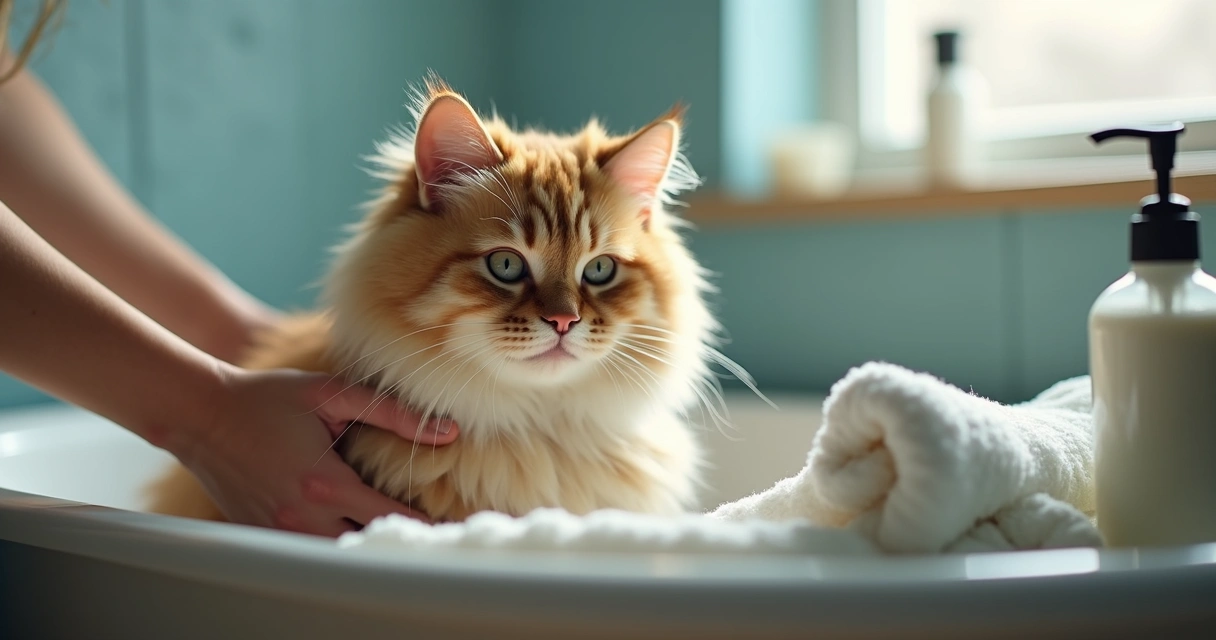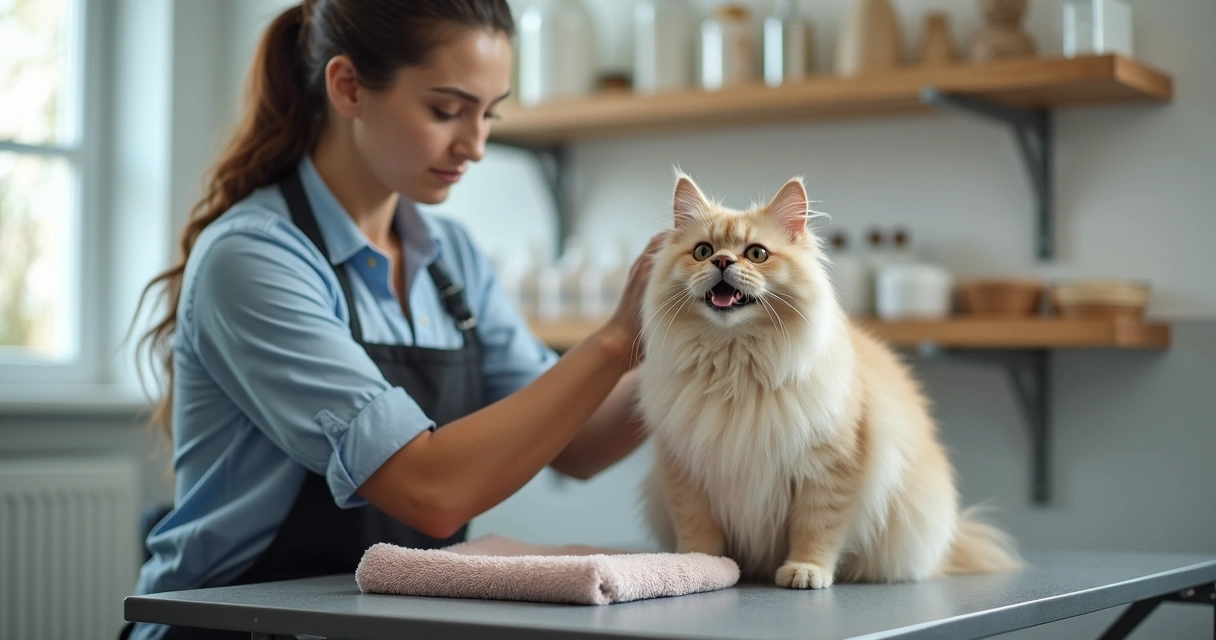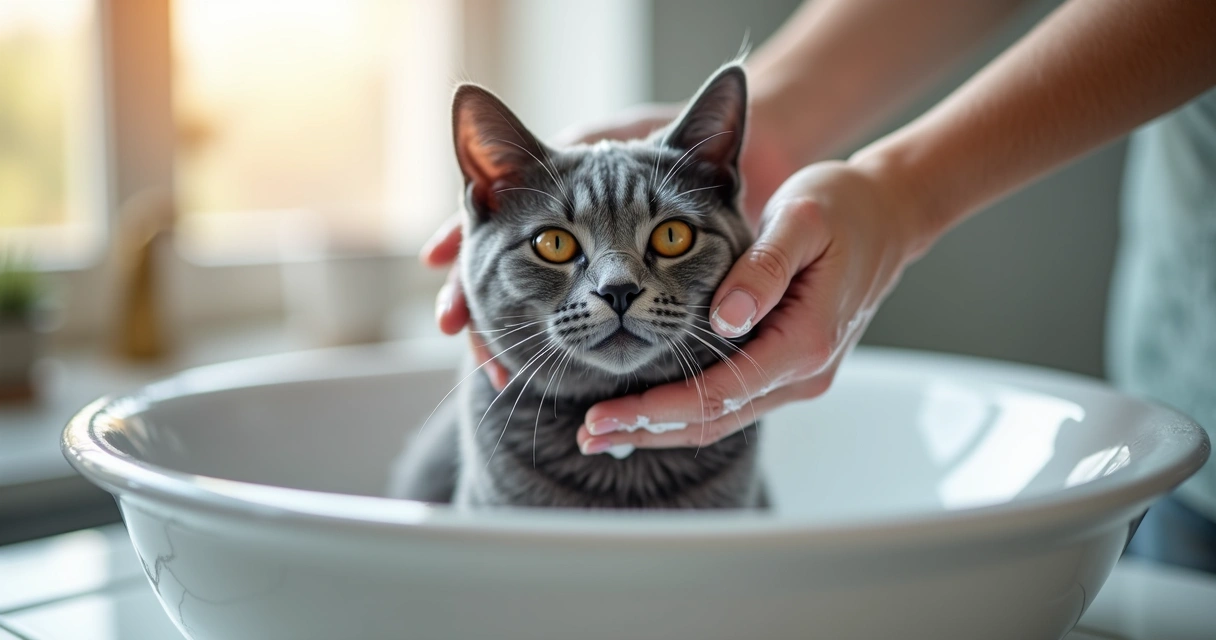If you’ve ever watched a cat meticulously grooming itself for hours, you may have wondered if baths are needed at all. That gentle rasping sound, the careful paw licking—cats practically invented self-care. But does this mean they never need help in the tub? The answer, supported by science, is not as black and white as it seems. If you’re a cat owner who’s puzzled by how often bathing is best, you aren’t alone.
“Most cats don't need frequent baths, but sometimes, they do.”
Let’s untangle this question with evidence, expert guidance, and real experience. And as a pet care provider, Dogtown understands that each cat has a different relationship with water—and dirt.
Do cats naturally keep themselves clean?
Cats are almost famous for their fastidious grooming. According to Cornell University’s Feline Health Center, most healthy cats are fully equipped to clean themselves. Their tongues have tiny hooked papillae that grab loose fur, dust, even some parasites.
- On average, cats can spend a third to half of their awake time grooming.
- Grooming controls body temperature, removes foreign substances, and helps with social bonding in multi-cat homes.
That’s a lot of dedicated effort for a species without a calendar. Usually, this routine is enough to keep their coats soft and free of debris. However, it’s not always foolproof.
When science says a bath is a good idea
So, why do some cats—even indoor ones—end up needing help with hygiene? The Centers for Disease Control and Prevention offers a useful guideline: Most cats don’t require regular bathing unless they’ve been exposed to sticky, toxic, or otherwise hazardous substances. If your pet spends time outdoors, rubs against something oily, or rolls in the wrong pile outside, that’s a clear case for a bath.
- Medical issues: Some cats develop skin conditions, arthritis, or obesity, which may limit their grooming abilities. Bathing becomes more important in these cases.
- Old age: Senior cats sometimes neglect their own cleaning, especially around the rear or lower back.
- Breed factors: Hairless cats like the Sphynx, or long-haired breeds such as Maine Coons, may need extra help.
Certain situations go beyond what even the most industrious cat tongue can tackle. If you notice stubborn dirt, or if a vet recommends it for medical care, bathing becomes part of your pet care toolkit.

What science-backed frequency makes sense?
Research—and real experience—suggests that most cats don’t benefit from regular, scheduled bathing. Both CDC guidance and studies highlighted at Cornell echo this fact. Instead, consider these science-backed pointers:
- Generally, healthy indoor cats may never need a bath.
- Cats with long fur might need bathing every 2–3 months, depending on matting or oiliness.
- Hairless breeds typically need more regular help (every 1–4 weeks).
- If your cat is elderly, ill, or overweight, help with bathing as needed—sometimes monthly or seasonally.
There isn’t a magic number. Look at your cat’s lifestyle, coat type, age, and health. Some short-haired, healthy cats go years without a single soak. Others require more hands-on care. The schedule should fit the cat, not the other way around.
When skipping the bath is better
Too much bathing isn’t just unnecessary; it can cause harm. Cats’ skin has natural oils that protect and nourish their fur. Washing too frequently strips these oils, risking dryness, irritation, or flakiness. Cats can also become stressed by bathing, which sometimes makes matters worse if done often or without preparation.
Here are signs it’s time to hold off:
- Healthy, shiny fur with no matting or odor.
- No medical conditions requiring bathing as part of treatment.
- A cat that grooms itself regularly and effectively.
If your cat is clean, let them be.
Signs your cat really needs a bath
Sometimes, it’s obvious when it’s time. But other times, you’re just not sure if they actually need it. Here are a few clear signals:
- Strong, lingering odors coming from the coat.
- Dirt or grease stuck in the fur, especially after time outside.
- Fleas, skin conditions, or vet recommendations for regular bathing.
- Matting in long-haired breeds that combing can’t fix.
If any of these pop up, it’s bath time. For cats with chronic health issues that make grooming tough, routine bathing is often advised by veterinarians. And of course, a sudden exposure to anything potentially toxic calls for an immediate wash, even if your cat won’t thank you for it.
Tips for low-stress bathing
For cats, baths come with a reputation. Most cats will protest. Sometimes, they’ll downright panic. Preparation helps a lot. As seen at Dogtown, gentle care, patience, and good technique reduce stress during bath time considerably.
- Cut nails first. Even the sweetest cat might scratch when scared.
- Use cat-safe shampoo. Never substitute with dog or human products—these strip oils and risk allergic reactions.
- Water temperature matters. Warm, not hot.
- Keep it short. Wet, shampoo, rinse, and dry as quickly as possible.
- Dry thoroughly. A warm towel and, for some tolerant cats, a gentle blow-dry on the lowest setting.
Cat grooming services at Dogtown provide support if your cat truly panics at home. Professional help can make a huge difference in your cat’s comfort when a bath is something they just can’t avoid.

Is brushing a better solution?
Sometimes a good brush does more than a bath ever could. Short-haired cats benefit from regular brushing to remove dirt and reduce hairballs. For long-haired cats, it prevents matting and tangles, and helps owners spot skin problems early. Professional pet grooming services at Dogtown often include brushing, nail trimming, and moisture treatments that keep your cat’s coat and skin healthy—without the full-on soak. Brushing is gentle, quick, and usually far less traumatic for everyone involved.
Cats and allergies: is bathing needed?
People with cat allergies sometimes wonder if effective bathing can reduce allergens. According to research, regular cleaning can temporarily lower the amount of dander (the main allergen), but results typically last only a couple days. There’s no permanent fix. Frequent bathing for allergies is rarely recommended by veterinarians, as it can stress the cat and dry the skin. Instead, a focus on brushing and washing beds or other soft items they use works better long-term. If allergies persist, consult a professional for other strategies.
A quick look at special situations
- Kitten care: Kittens under 8 weeks should not be bathed. Use a damp cloth for spot cleaning instead.
- Boarding or training: If your cat attends day camp or stays in boarding, ask staff about grooming needs. Social or outdoor adventures can sometimes bring home more dirt than expected.
- Behavioral support: Cats resistant to grooming might benefit from gentle training techniques that build positive associations with handling or bathing.
You know your cat best. If you see something off, it probably is.
Conclusion: less is more, but know when to help
For most cats, bathing is an occasional necessity, not a routine. If your cat’s habits, coat type, or medical situation change, adjust your care. Keep a gentle eye on their needs. Baths have a place, but gentle grooming, thoughtful observation, and professional help when needed are the best tools in your cat care routine.
If you want help maintaining your cat’s health and happiness or need guidance about grooming, consider Dogtown’s professional team. Your cat’s comfort, health, and joy come first—every single day. Book a grooming session or assessment to see the difference for yourself.
Frequently asked questions
How often should I bathe my cat?
Most healthy indoor cats rarely need a bath—sometimes never. Occasional baths may be needed if your cat gets into something sticky or dirty, develops a medical issue, or can’t groom themselves effectively. For long-haired or hairless breeds, bathing may be needed every 2–3 months or more frequently for oil control.
What is the best cat shampoo?
Choose a shampoo made for cats, not dogs or humans. Look for products free of harsh chemicals, dyes, and fragrances. Hypoallergenic, gentle formulas are safest. If your cat has skin conditions, ask your vet for recommendations.
Is it bad to bathe cats often?
Too much bathing strips natural oils and can dry out your cat’s skin, leading to irritation and discomfort. Only bathe as needed, and stick to a gentle approach. Too much stress from frequent bathing can affect your cat’s wellbeing.
How can I make bathing easier?
Trim your cat’s nails first. Have everything ready: towels, cat-safe shampoo, and treats. Use warm water, work quickly but gently, and keep the space quiet and calm. If your cat is extremely stressed, professional grooming, like at Dogtown, is often safer and less traumatic for both of you.
Do indoor cats need regular baths?
Regular bathing isn’t necessary for most indoor cats. Their grooming is usually sufficient. Exceptions include medical issues, accidents, or breed-specific needs. Focus on brushing, good nutrition, and keeping their environment clean.





